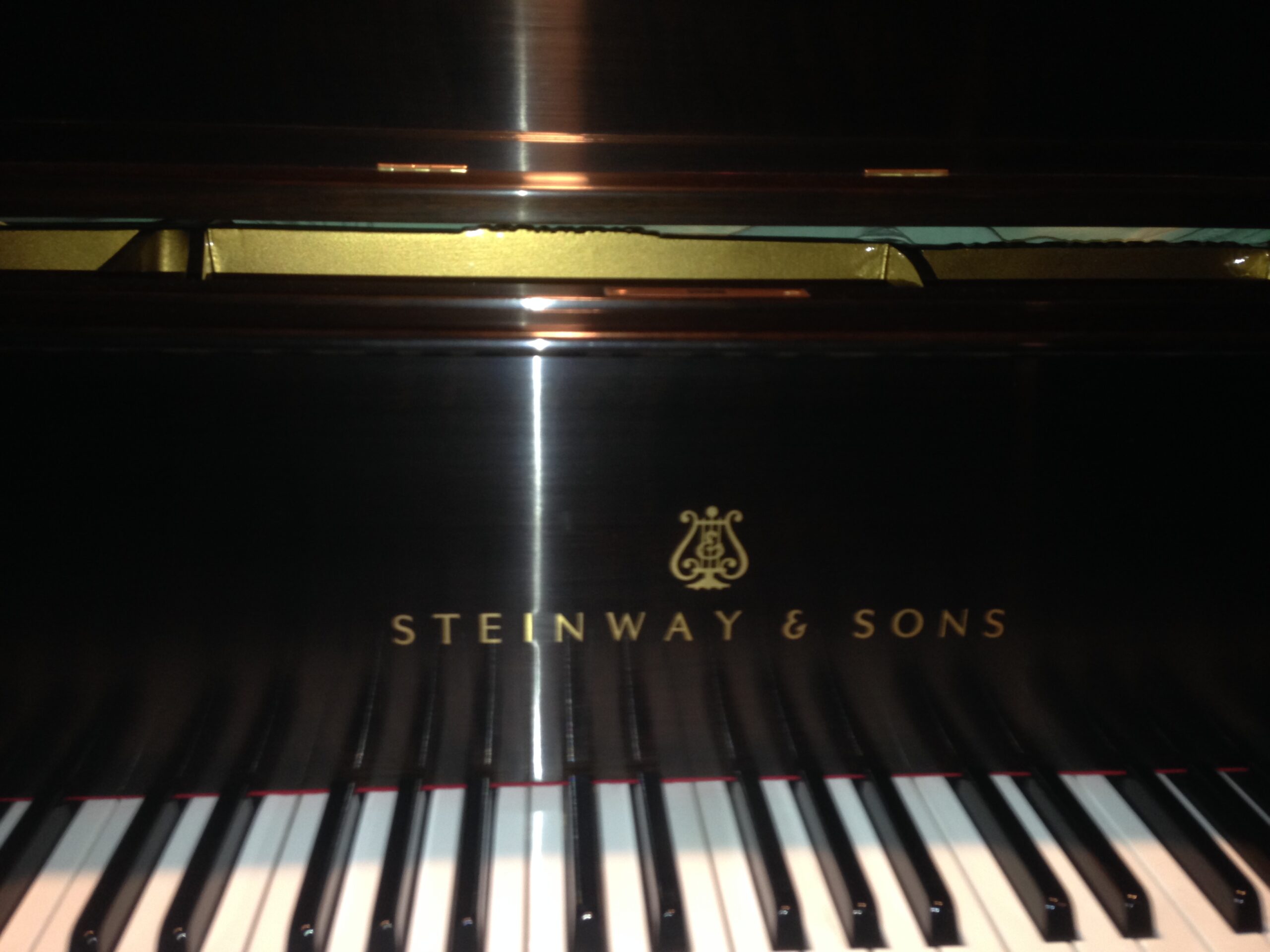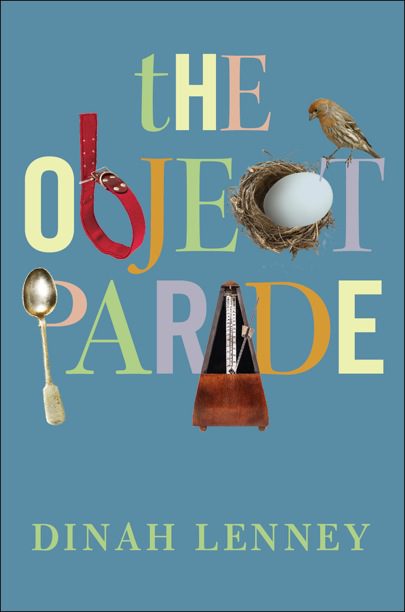
In the beginning—or somewhere in the middle actually—there was a parade. A parade of objects. Around a schoolyard. On a weekday morning, bright but unseasonably cold. At the appointed hour everybody—children, teachers, parents—spilled out of classrooms and cars, and congregated on one side of the blacktop. On the other, the calvacade assembled. My son Jake, nine or ten at the time, got in line as a walkie-talkie: head, arms, and legs sticking out of a box equipped with a long antenna and a speaker/receiver, a slightly sloping grid of black dots, painted on its face: behind him a pencil, number two, mustard yellow, four feet tall; in front of him a violin, a candlestick, a fork, a baseball bat. Also a globe, slightly misshapen. A bowling pin and a bottle of nail polish. Some forty objects, there being forty kids, third and fourth graders, in all. And the reason for the event? Celebration, culmination: see, each child had picked something—some thing—taken it apart for science and math, researched its history and relevance for social studies, described it in poetry and prose for language arts, and then sculpted it from papier mache to wear in the Object Parade—a curricular punctuation point—having to do with the idea that children will understand the world if they build it for themselves.
Which made sense to me. And, thus inspired, wanting to understand my life, I started making parade of my own: I began to write about objects—a watch, a piano, a little black dress; a spoon, a chandelier, a breakfront; a kite, two guitars, an imaginary letter.
But what if I’d chosen other things?
I could as easily have picked my grandmother’s tennis bracelet, which I wear with that little black dress. Or the potted hibiscus out there on the deck, a substitute for the one that I moved from the East Side to the West and back again when I lived in Manhattan. Or the circle of sea glass, the lip of a bottle my husband found on Kingsbury beach in Wellfleet and passed on to me for my collection, which I keep in a big glass jar. So many jars, come to think of it—such a variety of containers: a tin bowl big enough to bathe a baby in (and we did); a basket I found on a side street in Hollywood, sturdy enough to hold logs by the hearth; a ceramic wine pitcher, a gift from our waiter in a tiny restaurant on the edge of the Campo de’Fiori in Rome. The late 80s, it was, and us just married, and people kept giving us things.
We gave each other things, too. Fred bought me a slim painted box in a Budapest, and, in Malta, I found him a pair of lions, lacquered squares with heads and manes, big enough to hold stamps or paperclips, meant to suggest the original cats, the ones outside the library on Fifth Avenue, where we worked back then, and met through our boss, whose wedding present to us was a framed poster: A Building to Celebrate, it reads, in honor of the 42nd Street branch, which turned seventy-five the year we were married—it hangs in our living room over the breakfront.
Presents—there’s a category unto itself. For instance: my dad’s brown fedora (“You like it? Take it then”), or the beaded bag, given to me by Ella, his mother—for whom we pretend our daughter Eliza wasn’t named, because Jews don’t name babies for the living. (Except, when a person is beloved and nearing ninety-three—then some of us do.) The Eames chair in my office—my mother’s, of course—purchased before I was born and a bit worse for wear. Any number of books and records and utensils; the Bakelite napkin rings (a red duck and a green bunny); the shapely brass corkscrew, not a present, not really, though nobody seems to mind that I pilfered it from my mother’s kitchen decades ago. Nor did I mind, a few months ago, when my daughter packed up her car and drove to New York, with (among other things), a yellow colander missing its handles, a stack of cloth napkins, three loaf pans, a muffin tin, a red sugar bowl, a pair of candlesticks, and some buffalo china. Which brings me to China (see how one thing leads to another?): it’s framed—the place, I mean—on the wall in our bedroom. And that’s worth mentioning: how Fred took a scissors to a continent—cut China from his father’s old atlas and gave it to me for our 20th—because, tradition notwithstanding, we didn’t need actual china: because, said he, he’d have taken me to China if he could. And I was as delighted with China-in-a-frame as if he had. Funny to consider: were I to write about the old atlas, I’d might find myself yearning for places I’ve only dreamed of going. Whereas to write about the missing page, the framed map on the wall, is to yearn for the road we’ve actually traveled, which, but for the evidence—China, framed (among other objects)—might also be a dream. This is how it works, isn’t it? We attach meaning to things, and things to meaning: endow them one way or another as if to prove to ourselves that we are who we are; this life really happened; we really have traveled this far.
Take the seals. How did I leave them out? Three sizes, made of pewter—they belonged to Fred’s mother. They comfort and signify—but not just for him. I love them, too, for their shape and heft and featureless mystery. And because they remind me: we were on our honeymoon. We’d only just arrived in Big Sur, weren’t even unpacked when we decided to take a drive along the coast, and not far from the hotel we pulled into a rest stop for the view. Next to us there, leaning against a Winnebago, a middle-aged woman, one hand on her hip, smoked and fumed, while her husband, just paces away, peered over the guardrail and down the cliffs.
We got out of the car.
The woman jutted her chin in the man’s direction and made a face. “He thinks he heard a seal,” she said.
The man looked back and noticed us then. “Come look,” he shouted. “There’s a seal down here, I heard a seal!”
“We’ve been standing around for a half an hour,” said his wife. “Nothing down there, not a damn thing.” She took a long drag.
Politely, we nodded—then sidestepped over to her husband to see for ourselves. He was wearing a baseball cap, I remember, and wire-rimmed glasses, and his shirt, buttoned high, strained across his belly.
“It’s down there somewhere,” he said. “I know it is.”
His wife stubbed out her cigarette with one shoe. “Let’s get going,” she bellowed. “Come on, already, I’m hungry, let’s get on the road.”
The man shook his head and sighed. “I know I heard a seal,” he said. “You keep looking, I bet you’ll see it.” He walked back to his wife and they climbed into the cab.
And we looked down. The cliffs were vertical and jagged, the water rough and gray-green. And so many stones, shiny and smooth—big black stones along the narrow strip of sand at the water’s edge, and on top of slabs of rock, too; stones, enormous and wet and glinting in the sun. Just as the Winnebago pulled onto the highway, they started to move. And bark. Hundreds more emerged then, more stones swimming out from underneath a ledge, they slipped and splashed into the water, a flock, a pod—a sign, it seemed to us—a chorus of well-wishers, a harem of seals.
*
Now this here, this is a dream: We forgot to get married and we never had children—we never got around to any of it. And now, in the dream, he’s had it with me, he’s leaving, he says. In the dream, I’m 30, 35, 40, 45, 50… That is, I’m as old as I am. The dream is recurring, but different from the others, the ones in which I’m barefoot and trudging uphill or wading through water with all my belongings balanced on my head like a picture in National Geographic. This dream, unlike those, is so real, which is maybe why I’m not able to wake myself up. In this dream, he’s my very last chance at a real life—he is my real life — and he’s walking away. In this dream – though I’ve shrugged him off a half a dozen times during the day—though I’ve been snippy and critical and rude (maybe because I’ve been all those things), though I’ve thought more than once I’d just as soon live by myself—that way the counters would stay clean and I could be as selfish I am—it’s Fred who decides he can’t take anymore. In the dream, as in life, he is even and rational and kind. He’s not changing his mind. It just isn’t worth it, he tells me. But, I wail, we forgot to get married. Can’t we get married? Can’t we have a couple of kids? Weren’t we supposed to have a couple of kids, please? In real life, he saves me then. “Dinah, wake up,” he says, touching my shoulder. And I do.
*
One evening not long after Jake had followed Eliza to the east coast for college, we were driving through Hollywood when we saw this little family—a couple with two babies— standing on a corner near Melrose and La Brea, waiting for the light to change.
It was dusk on a Sunday in autumn, the color fast draining from the sky, the storefronts dark and closed, the streets fairly empty. We were on our way back to Echo Park from an event where we hadn’t even tried to have a happy time. We’d imagined that it would be good for us, wallowing as we were in misplaced and embarrassing sorrow, to get out into the day. Hadn’t we known the children would leave? Wasn’t that the idea, after all? Of course it was. Even so we couldn’t accept, not then, not yet, that the house had always been generously sized for just us two. We couldn’t know we’d eventually revel not only in the kids’ independence, but in our own, rediscovered and restored. But if we were a few inches shy of remembering that we’d chosen each other in the first place—that was the point and the reason—we were also absolutely in sync, we two: united, from the moment we arrived on the other side of town, in our desire to go home and continue to feel sorry for ourselves. The party—our party—appeared to be over, or happening elsewhere without us anyway. A tenuous connection, I know, but we felt hollowed out that day. Like defunct pinatas, cracked beyond repair, as if constructed from papier mache.
But then there they were, a family of four.
“Look,” I said, pointing with my chin (the best I could manage) as we cruised to a stop. It was windy: the woman’s hair blew across her mouth, and she let it, both arms wrapped around the bundle on her chest—yellow? pale blue?—one hand cradling the infant’s tiny hooded head. On the other side of the empty stroller between them, the man held the hand of a toddler, fair like his mother, bouncing up and down. We watched, both of us mesmerized, as the light went green—no traffic behind us, no need to drive on.
“They have no idea what they’re in for,” I said.
“No, they don’t,” said Fred. “But they’ll figure it out.”
And they crossed then, in crooked single file, the man scooping up the boy and waiting for her to go first with the baby, then following behind.






